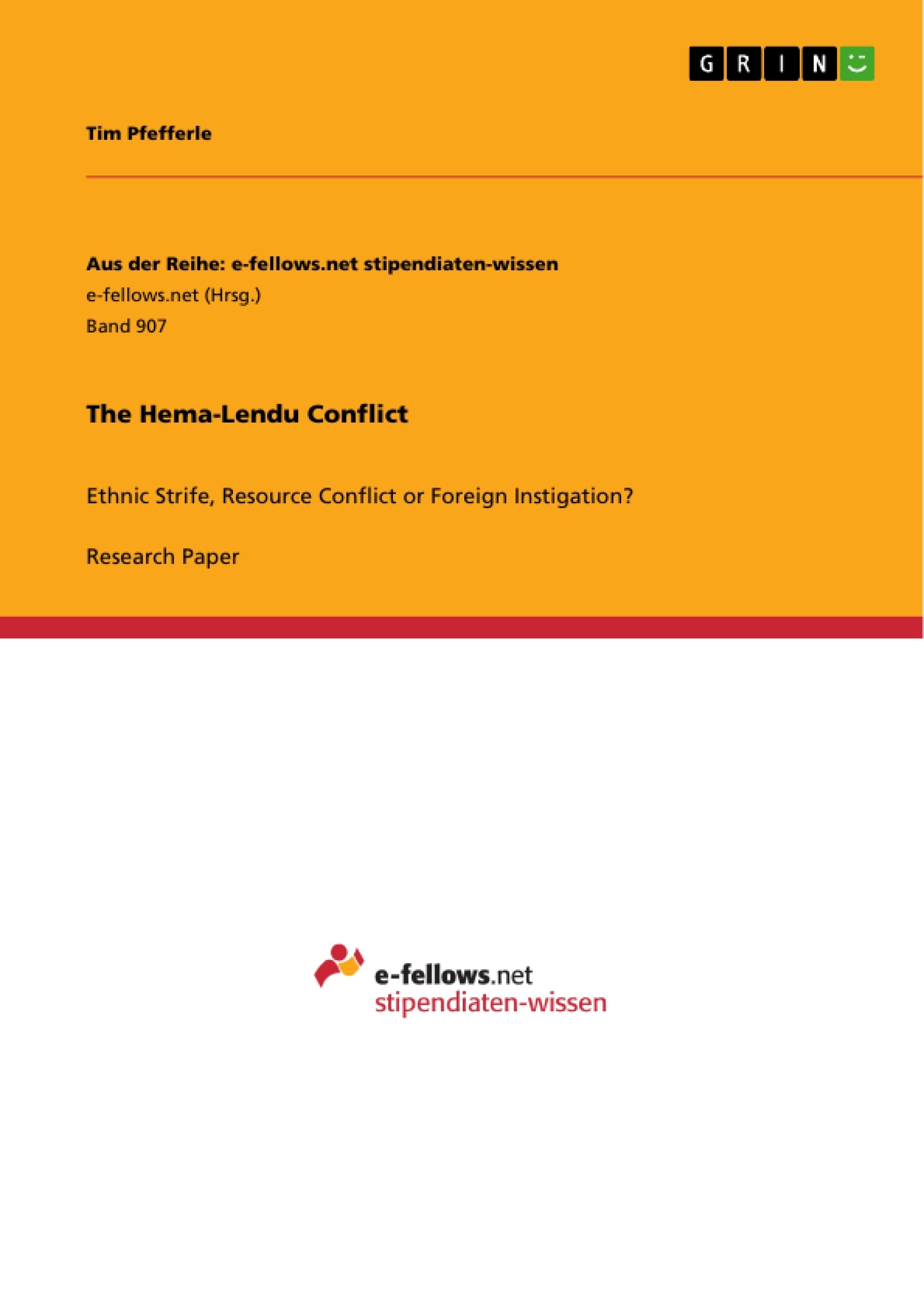Excerpt
Introduction
In March of 2012, Thomas Lubanga became the first individual to be convicted by the International Criminal Court in The Hague, having been charged on the three counts of recruiting children, enlisting children into rebel militia and using children in combat (ICC, March 14, 2012). Having been arrested in 2005 in Kinshasa, Lubanga spent several years in the Ituri region of the Democratic Republic of the Congo as a rebel leader, purportedly fighting the central government headed by Laurent Kabila, and subsequently by his son Joseph Kabila.
Since the Rwandan genocide in 1994, conflict has swept over into the DRC, precipitating the breakdown of the longtime dictatorial regime headed by Mobutu Sese Seko. In the fall of 1998, conflict reached the Ituri region of northeast DRC. The strife was categorized as an inter-ethnic conflict between the Hema group and the Lendu group. While some argue that it was catalyzed precisely by the differences in ethnicity, others maintain that the Ugandan presence in the region facilitated the outbreak of conflict.
What is the relationship between endogenous reasons for conflict, such as the factor of ethnicity, and the exogenous causes leading to instability, as in this case perhaps Uganda’s role? Why did the conflict escalate to engulf the entire Ituri region and contribute to the destabilization of the eastern territories of the DRC? This essay will aim to provide an overview addressing these questions. Following a brief review of the conflict’s background and a statement on the research question, it will present an engagement with the themes outlined above in terms of the question of resources and land, institutional fragility, as well as Uganda’s motivations.
Historical Background
The Democratic Republic of the Congo has been a hotbed of conflict for several decades. Kisangani notes that there have been seventeen recorded civil wars between 1960 and 2010, leading to an estimated four million deaths (2012: 1). The period under review in this essay can be seen as a particularly troublesome time, This has led some commentators to term this period as “Africa’s World War” (Gettleman, April 2 2005), with several African countries and numerous rebel groups implicated in a struggle for power, resources, and security.
In the aftermath of the Rwandan genocide in 1994, the DRC, then still called Zaire, fell prey to the forces unleashed by the mass migration of Hutu groups across the Rwandan border and into the eastern regions of the country. This prompted an invasion by the Rwandan government to ensure the containment of those Hutu factions implicated in the genocide (Turner, 2007: 1). In the process, Rwanda backed Laurent Kabila, a Congolese rebel leader who would go on to depose dictator Mobutu Sese Seko. However, by 1998 Kabila fell out with his backers (Ibid). Subsequently, Rwanda again facilitated an invasion, joined by Uganda in an effort to depose Kabila.
This is the context in which the Hema-Lendu conflict needs to be situated. It is not a strife separate from these circumstances, but is embedded in the larger struggle for control of the eastern area of the DRC. In mid-June of 1999, local land disputes between the Hema, a pastoralist ethnic group, and the Lendu, who engage more in agriculture lead to the outbreak of sustained clashes (Ngolet, 2011: 131). According to Lemarchand, one thousand people were killed and a further fifty thousand displaced in June 1999 (2009: 235). He notes that “the spark that ignited the killings was a dispute over land in Djugu, involving Hema claims over a farm owned by Lendu” (Ibid). Ngolet, however, adds that this incidence cannot be looked at as an unusual moment, given the occurrence of previous conflicts in 1972, 1986 and as recently as 1996, right before the clashes under review here (2011: 131). Therefore, there was an existing basis of animosity on which the clashes in 1999 were feeding.
According to Prunier, up to seven thousand people were killed in further clashes in November of 1999, while also adding that one hundred thousand were internally displaced (2009: 230). As a result of the ongoing war-like state of the eastern territories of the DRC, Uganda was in control over the Ituri area. The Ugandan official in control, General James Kazini, had decided to restructure the provinces of northeastern Congo, creating a new province called Kibali-Ituri. In the process, he appointed Adele Mugisha, herself from the Hema group, as the governor of the newly formed administrative district. In accordance with her ethnic origins, Lemarchand notes her “decidedly pro-Hema attitude” (2009: 235).
Ngolet describes the manifestations of the conflict as “burned villages and abandoned fields containing the sparse remnants of the summer crops” (2011: 132). Intense conflict simmered on, with between twenty to thirty thousand more IDPs in December of 1999 (Ibid: 133). The first Lusaka ceasefire agreement did not curb violence in Ituri. Subsequent events, most significantly the assassination of President Laurent Kabila in 2001 and the second Lusaka ceasefire agreement in 2002 did leave an imprint on the situation in Ituri. Most importantly, the agreement arrived at in 2002 mandated all foreign powers to vacate the area (Turner, 2007: 8). Furthermore, by 2003 the United Nations mission in the DRC, MONUC, had been set up, which at least provided for a neutral security force to help alleviate the tensions (Wolters, 2005: 1). Yet, MONUC is also heavily criticized for its inability to act in a decisive manner (Raeymaekers, Vlassenroot, 2004: 26).
[...]
- Quote paper
- Tim Pfefferle (Author), 2013, The Hema-Lendu Conflict, Munich, GRIN Verlag, https://www.grin.com/document/214420
Publish now - it's free






















Comments